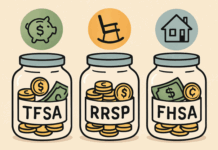The moment you decide to make an investment, there are several aspects to consider, such as the choice between passive and active investing. The main difference between these two types of investment lies in the strategy used to select the securities that will make up the investor’s portfolio or a fund’s basket of securities. More specifically, while the passive approach replicates a basic benchmark, the active approach attempts to outperform it.
In this article, we will explain the differences between these two types of investment and how professionals balance them properly. Beginners who do not have sufficient financial expertise or prefer not to manage their portfolio directly can rely digital wealth managers like Moneyfarm which build and manage well-diversified portfolios aligned with each client’s risk profile, making effective use of both active and passive investment strategies.
What Are Passive Investments?
When we talk about passive investment, we are referring to an investment strategy that structures the fund’s portfolio or basket of securities to replicate the performance of the selected index or indices. The objective of investors or fund managers who apply this strategy is therefore not to outperform the indices, but to remain as close as possible to them, achieving a similar return.
This kind of investment, typical of ETFs and passive funds, is generally known for low costs, guaranteed by simplified management, and a good level of diversification, deriving from the variety of securities that make up the benchmark indices.
Active Investments: What Changes
Unlike passive investments, active investments require complex management. In this case, the objective of investors or fund managers is to outperform the market, exceeding the performance of the benchmark. In order to achieve this result, they must carry out market analysis, study charts and statistics, and apply all the techniques and strategies they deem most appropriate to make successful choices.
This type of investment generally involves high costs, due to the complexity of management, and greater risks. These risks translate, as it always occurs in the investment sector, into the possibility of higher profits, if the investment performs well.
How to Balance Passive and Active Investments
A new investor seeking the right balance between passive and active investments should always rely on an experienced financial advisor. This professional can help identify the most suitable strategy by evaluating the investor’s goals, risk tolerance, and long-term objectives. In many cases, advisors also provide practical resources—such as Money Management Handouts—to help investors better understand budgeting basics, cash flow planning, and how different investment approaches fit into an overall financial plan.
- their risk tolerance, which can be defined by assessing their financial situation and their ability to manage their emotions
- the goals they would like to achieve in the short, medium and long term
- the established term of the investment
All these factors can help build a portfolio in line with their investment assets that can properly balance passive and active investments.
To give just a few examples, a small saver with a not particularly high income and a high emotional level, who wishes to achieve a long-term financial goal, which could be to obtain a small amount of capital or additional income to use after retirement or a sum of money to give to their children when they reach adulthood, may be mainly advised to make low-risk and low-cost passive investments.
On the contrary, a strong investor with high financial resources and emotional resilience, interested in increasing their capital in the medium to long term, may be advised to diversify their portfolio by focusing on risky active investments and balancing this with a good base of passive investments characterised by a lower level of risk. Of course, as mentioned, an experienced advisor will propose, on a case-by-case basis, how to best structure the portfolio in order to achieve the right balance.
Find a Home-Based Business to Start-Up >>> Hundreds of Business Listings.














































